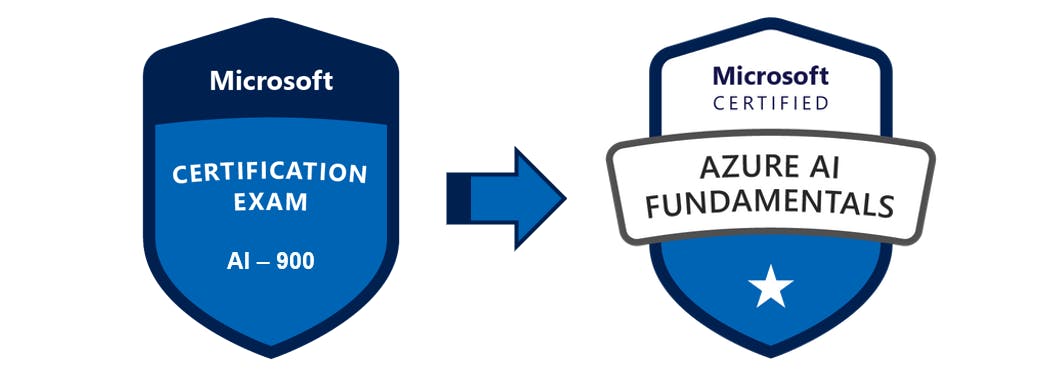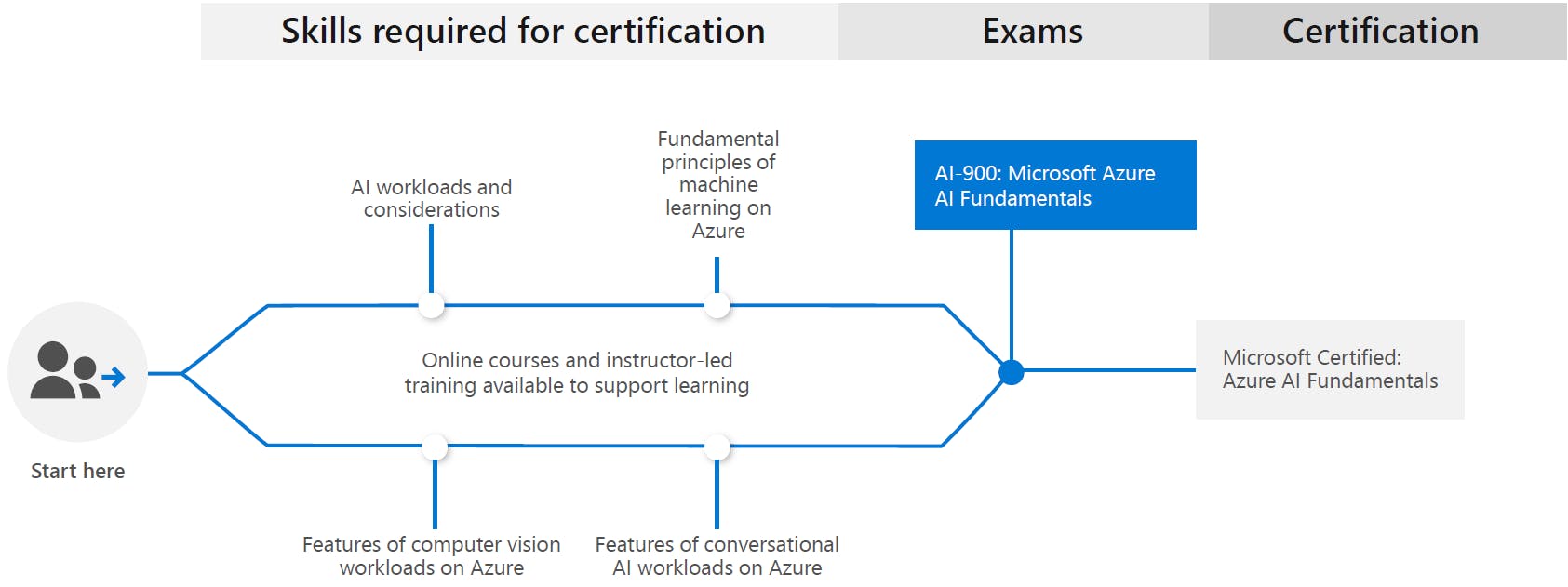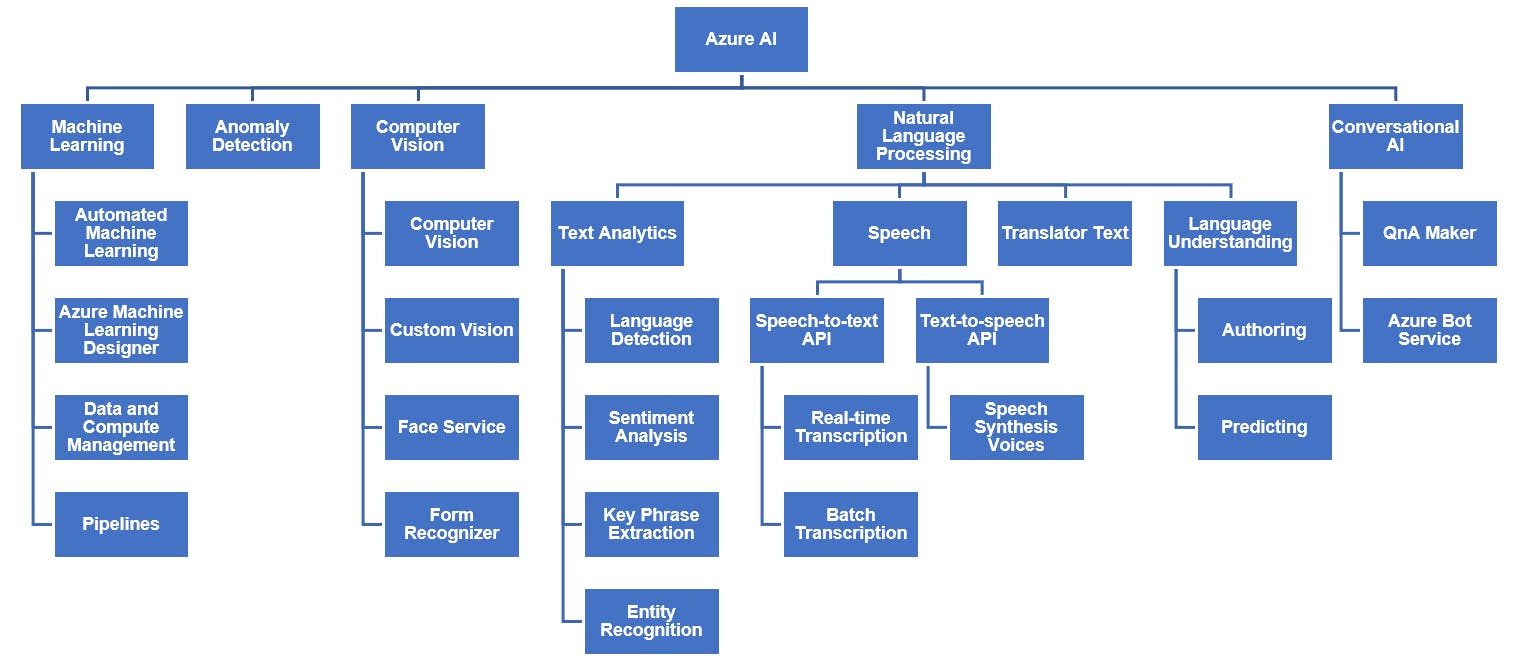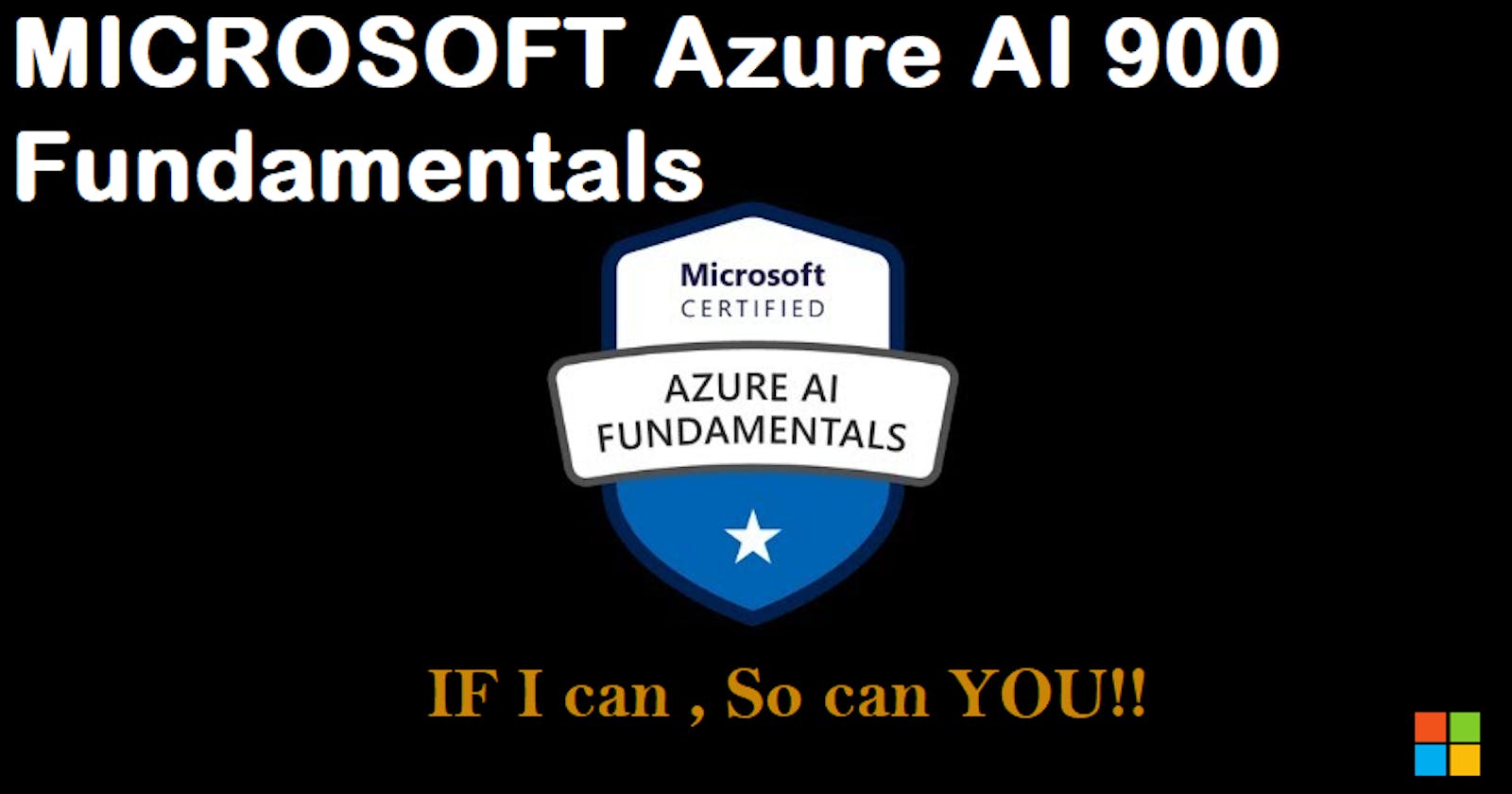Microsoft Azure AI Fundamentals AI-900: How to Prepare and Pass the Exam
Let's ace it out !!!!
Hello Everyone, Hope you are Doing GREAT...!🖐🏻
Are you preparing for the AI Fundamentals AI-900 exam? Many questions would be hovering into your mind like what will be the difficulty level of the exam? On which Microsoft Azure AI topics should I spend more time? and so on.
Don’t worry! I also had these questions in my mind while preparing for my Microsoft Azure AI Certified Fundamentals exam certification. I got over these questions and finally passed the certification exam. Yes, I’m a Microsoft Azure AI Fundamentals Certified now!🤩
Microsoft Azure AI Certified Fundamentals Exam
I believe it’s a good start to enter the Azure World. Passing the certification would give you some confidence to Azure services and its technology. As the name suggests AI-900 Microsoft Azure AI Fundamentals is one of the basic exams that covers some general knowledge about Microsoft Azure AI.

Why should you take this exam
You should definitely take this examination If you’re a beginner to AI. If you wish to learn what specifically AI is and what kind of services Microsoft Azure offers, this is often the exam for you. You will learn and be familiar with all types of workloads that you simply should do when it comes to machine learning and artificial intelligence by doing this certification.
Cost of this Exam
Usually, the exam costs USD 99 (INR 3696). However, the costs can be reduced by applying a voucher.
How to answer the exam for FREE ?
Yes, you read it right. You can avail of this examination for free of cost. How?
Microsoft has hosted a wonderful initiative called Microsoft Virtual Training Days. During these 1–2 days training sessions, Microsoft Trainers make attendees aware of all the concepts that are required to pass the certification exam, provide helpful resources and clear doubts that attendees have.
If you want to register for the Microsoft Azure Virtual Training Day: AI Fundamentals, you can register by clicking here . Select a time of your choice for the session. On attending the session successfully, the participants will receive a mail with information regarding the Certification exam within 5 working days. For more details on availing of the discount code , click here .
Prerequisites for the Examination
Having a basic knowledge of Azure will make it much easier for you to understand the concepts covered in this course. Having a foundational knowledge of { ML } machine learning and { AI } artificial intelligence concepts and related Microsoft Azure services can help you skim through this very easily and will reduce your preparation time.
Syllabus and Distribution

Through the exam, various concepts of AI and ML and their implementation in Azure are tested. The above table shows the weightage of different study areas covered in the exam.

Types of Questions Asked :::
**The exam presents questions of various types :**
Multiple choice: One correct response and three incorrect responses; two or more correct responses out of five or more options.
True or False: Select Yes or No based on the righteousness of the statement.
Drag and Drop: Move the response to the correct description.
Hot area: Answer questions (screenshot, picture, or diagram) in a graphical form.
How much time do I need to prepare for the AI-900 ?
The time you take depends on your ability and will to learn. Considering full dedication from your side, 2 days of preparation are more than enough for being able to pass the exam.
How to Prepare for the Exam?
Instead of buying Books and Courses, I would suggest against it . I think there is already a lot of information present on the internet that you can make good use of. It’s really easy to pass this exam with flying colours. I would suggest you to use the following resources to boost your preparation:
- Microsoft Learn Free Learning :::::: A platform where the concepts are charted out and practical's can be done using the Learn Sandbox Subscription provided. Certain resources like Azure VMs are not provisioned by the Sandbox and hence will require an Azure Subscription. You can apply for a free subscription here if you have not already applied for one.
- AI-900 Dumps ::::: Previously asked questions from the papers. Refer to the discussion section from the website for more appropriate answers and explanations.
Important concepts which are most commonly asked in the AZ-900 Certification
1. AI Workloads and Considerations

The above diagram sums up the key concepts of Azure AI Fundamentals. This summary is what the entire 1st section is about. Along with this, you also need to have knowledge about the principles of responsible AI.
Usually, questions based on definitions and assessing which principle is being followed are asked from this section. The following are the guiding principles:
Fairness: AI systems should treat all people fairly.
Reliability and safety: For example, consider an AI-based software system for an autonomous vehicle; or a machine learning model that diagnoses patient symptoms and recommends prescriptions. Unreliability in these kinds of system can result in a substantial risk to human life.
Privacy and security: AI systems should be secure and respect privacy.
Inclusiveness: AI systems should empower everyone and engage all parts of society, regardless of physical ability, gender, sexual orientation, ethnicity, or other factors.
Transparency: Users should be made fully aware of the purpose of the system, how it works, and what limitations may be expected.
Accountability: People should be accountable for AI systems and should ensure the solution meets ethical and legal standards that are clearly defined.
Apart from this, the process of anomaly detection should be understood well.
2. Machine Learning
Difference between use cases of classification (labelled groups), regression (number prediction), Clustering( Unlabelled groups, based on similarity).
Ability to distinguish between the following:
Compute Instances : Development workstations that data scientists can use to work with data and models.
Compute Clusters :: Scalable clusters of virtual machines for on-demand processing of experiment code,
Inference Clusters :: Deployment targets for predictive services that use your trained models.
Attached Compute :: Links to existing Azure compute resources, such as Virtual Machines or Azure Databricks clusters.
Automated Machine Learning :: automated for supervised learning (Classification, Regression, Time-Series Forecasting)
Best Model :: Based on the transparency principle, this feature helps explain to the user why a particular model is chosen and how it complies with regulations and best practices.
Metrics used for Classification (True Positive Rate / ROC Curve) and Regression (Mean Absolute Error, Root Mean Squared Error, Relative Squared Error, Relative Absolute Error, Coefficient of Determination)
Model Evaluation :: The Model evaluation module outputs a confusion matrix showing the number of true positives, false negatives, false positives, and true negatives, as well as ROC, Precision/Recall, and Lift curves.
Confusion Matrix :: How to read and identify True Positives, True Negatives, False Positives and False Negatives.
Feature Engineering :: Using domain knowledge of the data to create features that help ML algorithms learn better. Scaling and normalization techniques are applied to facilitate feature engineering.
Feature Selection :: Selecting a subset of relevant, useful features to use in building an analytical model.
3. Computer Vision Workloads
Difference between Image Classification, Object Detection, Semantic Segmentation, Image Analysis, Face Detection, Face Analysis, Face Recognition, Optical Character Recognition.
Custom Vision: service used to train only image classification and object detection using your own images.
Face Service: service that enables you to build face detection and facial recognition solutions.
Form Recognition: service used to extract information from scanned forms and invoices.
4. Natural Language Processing (NLP) Workloads::
- Entity recognition ::: returns a list of entities in the text that it recognizes. TAn entity is essentially an item of a particular type or a category; and in some cases, subtype.
The type of entity may also be mentioned near it.
Speech Recognition = Speech-to-text
Speech Synthesis = Text-to-speech
Language Understanding Intelligent Service (LUIS): used to train a language model that understands spoken or written commands.
Translation of Speech is done by Speech and not Translator Text API.
Utterances (what a user says), Entities (item to which an utterance refers) and Intents (purpose or goal).
- Key phrase extraction ::: identifying the main talking points of the document(s).
5. Conversational AI Workloads:::
Different examples of Conversational AI ::: Eg: An automated-voice menu on the telephone.
QnA Maker::: It enables you to build a knowledge base. Questions and answers can be generated from an existing FAQ document or web page, imported from a pre-defined chit-chat data source or entered and edited manually.
Azure Bot Service ::: It helps you to create, publish and manage bots.
Perks of answering the AI-900 Exam🏅
On answering the AI-900 Microsoft Azure AI Fundamentals Certification, you receive the following documents:
🎖 A transcript of your performance in different sections of the paper, to help you assess your understanding of the various concepts.
🎖 If you pass, you receive an email with a Microsoft Certified Azure AI Fundamentals Badge within the next 48 hours.
🎖 If you pass, you can access the Microsoft Certified Professionals Certification on creating an account (with the same credentials as the ones used in applying for the exam) using this LINK.
Conclusion
With a basic understanding of the concepts and proper preparation using the dumps as a sample, one can easily crack this certification exam.
What Next ?
Well, that's it from me, HOPE you find it helpful . Keep Learning , Keep Moving #All the Best for your EXAM. If you have any more doubts, you can always connect with me on my social media handles.
A tip to ace this exam : 💡💡
Complete the Microsoft Learning Path by reading through and understanding concepts. Don’t struggle or rot-learn. Just understand and take in all that you can.
🤞🏻 Hope YOU like it ..If you did then, Show some 💖
